Q&A with Samsung’s Jay Kelbley: Will mobile OS fundamentally change the camera market?
posted Tuesday, October 30, 2012 at 7:14 PM EST

Imaging Resource's founder and publisher Dave Etchells and Senior Editor Shawn Barnett recently sat down for a conversation with Jay Kelbley, Senior Marketing Manager for Digital Imaging at Samsung Electronics. Topics for discussion included the compelling Samsung Galaxy Camera -- the first dedicated, mass-market camera to include built-in 3G / 4G data connectivity -- and the company's plans for its NX-series of mirrorless cameras, as well as the future for Android, WiFi and more in the camera market.
Dave Etchells/Imaging Resource: You've introduced your Android-based Samsung Galaxy Camera now, and we’ve heard it’s going to be available through AT&T with the announcement earlier this month. Do you know anything about what it will cost, and when will it be available?
Jay Kelbley/Samsung Electronics: We haven’t announced availability or pricing. Pricing will be really up to the carriers and how they model their offerings to their customers.
DE: A related question is whether the Galaxy Camera will only be offered through the carriers, or whether we’ll see it in consumer electronics and camera specialty resellers at some point?
JK: Well, for the 3G / 4G version, that will absolutely be tied to a carrier sales model. So it’s up to the stores how they’ll handle it.
DE: So if a store is selling AT&T data plans, this will be one of the devices available for it.
JK: That’s a reasonable assumption.
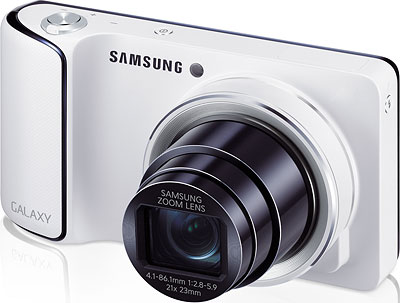
DE: You mentioned the 3G / 4G version. Will there be a WiFi-only version as well?
JK: At this time, we haven’t announced a WiFi-only version.
DE: Okay. And the 3G / 4G version also has WiFi capability, correct?
JK: Oh yes, absolutely.
DE: Of course, I’d like to ask you about the cost of the data plans and that sort of thing, but it sounds like you wouldn’t have that information yet either.
JK: Right. That’s really going to come from the carriers as well, the same as in the phone paradigm.
DE: If you don’t know about the availability of it in the market, when do you think we might see sample products to evaluate?
JK: Any time now.
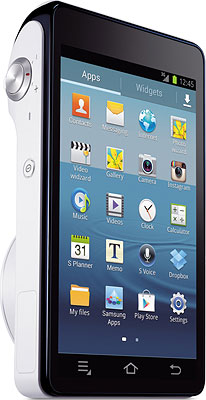
DE: I didn’t have a lot of time with the Galaxy Camera at Photokina or at PhotoPlus, and you know a trade show booth is not an ideal environment for evaluating a camera. But I was impressed with the UI on the Galaxy Camera -- the camera and Android parts seemed well-integrated.
JK: Yes. It’s a little bit different architecture than what most of the market is doing. We’re not slapping an Android device together with a camera device. This is a fully integrated camera running Android.
DE: I’m curious about the internals of the camera’s functioning, and whether it’ll potentially have an Application Programming Interface. [Ed. Note: An API is a way for app programmers to access and control camera functions directly.] With the iPhone, there’s a camera there, but you really can’t do much with it through software. Is there, or will there be an API that will let programmers get at functions like shutter speed, aperture, zoom, etc?
JK: We’re doing a lot of work to enable developers relative to the Galaxy Camera. In terms of the specifics of an API, I don’t have any info on that yet. But it is a priority for us to enable the market with tools to make the camera more extensible.
DE: So whether it’s a structured API or something else, you’re actively working to give people access to the guts of the camera. I think that’ll be really fruitful for Samsung.
JK: The value in combining an open OS like Android and the camera is that it enables the market to really take us in directions that we can’t anticipate. You know, it’s opening up a whole new world of potential applications and customers for cameras.
DE: Yes, I can see now, the headline will be, “Android is the new Digita.” [Ed. Note: Inside joke for old-timers in the digital camera business; Jay didn’t seem thrilled with the comparison…] How similar are the internals of the Galaxy Camera and the Galaxy smartphone?
JK: Architecturally, it's very similar to the Galaxy S III.
DE: The same processor, the same version of the OS, all that sort of thing?
JK: I don’t know if the OS is exactly the same; I haven’t torn one of these apart yet. But yes, the same quad-core processor. I want to say it’s the same OS, or it’s at least a very similar one. I don’t know how much this version may have been modified for the camera. I’m hoping we’ll have more technology details soon.
DE: How much does the Android capability affect the battery life of the camera or, alternatively, how much does the camera affect the battery life you would have seen out of the Galaxy S III?
JK: I don’t have anything definitive to tell you. The battery is beefed up more than a normal camera battery. This one has a 1,650mAh battery in it, so it’s pretty hefty. A lot of the possible impact on battery life is mitigated by the bigger, beefier battery.
DE: But you don’t have specs on battery life yet from headquarters?
JK: No, we don’t. We’re still doing a lot in terms of firmware optimization, shortened boot times, optimizing for power and all that. As we get closer to release versions, we’ll have specs. But you know, since it is an open OS camera, just like the phone, we would expect to be able to improve a lot of those things over time with updates.
DE: Do you think we’ll see the Android capability propagate across more of the Samsung’s point-and-shoot line in the years to come? Is this something that’s going to become fairly broad, or will it be more of a niche product within the line?
JK: I would say just like connectivity, it’s become a table-stakes feature for cameras. I think you’ll see flexibility in terms of OS and customization and extensibility play a really important role in cameras going forward. There’s no technical reason not to put WiFi or connectivity or a more customer-friendly OS in cameras.
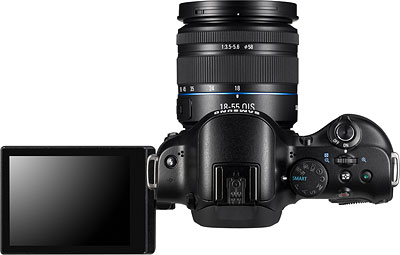
DE: How about on the interchangeable-lens front? Do you see benefits for Android there, and is that something we might expect to see happening?
JK: I think camera customization in an open OS will play a role going forward in all classes of cameras from a specific model and feature standpoint. I really can’t comment in detail on future directions for us.
DE: But philosophically, it seems like you see a benefit there that should be worth pursuing.
JK: Oh, yes. I can agree with you that there are tremendous benefits in opening up all classes of cameras to OS customization.
DE: I alluded to this in an earlier question: part of the appeal of Android in a camera is the WAN connectivity, the 3G/4G that you have on the Galaxy Camera, but there’s also an issue with data plan costs. Do you think consumers are going to be willing to take on yet another monthly charge just to connect their cameras?
JK: I really can’t comment on the data plan portion of it. That’s all about how 3G and 4G is rolled into customers’ data plans and pricing and all that. That’s really going to be up to the carriers. I would expect as more and more non-phone devices are connected for there to be a fairly significant evolution in how customers can pay for them and interact with carriers on them.
DE: It really seems like it's to the carriers' advantage to make it easy to connect these devices for modest incremental costs. If I’ve already got an AT&T account for my phone, it would make sense to say that for another $5 a month, you could connect your camera, too, or something like that.
Shawn Barnett/Imaging Resource: As far as data goes, both Verizon and AT&T have announced plans where you could share a bucket of data. It’s $10 per additional device, which will add up on a per-month basis. But the question is: Will we find out cameras are actually $25 extra, considering how much more data they're likely to use?
JK: Honestly, we can’t comment on their data plans because they’re their data plans.
SB: Does the Galaxy Camera downsample images automatically so they can be uploaded inexpensively through the network?
JK: You can shoot them at lower res, for one thing. There's also a whole myriad of Android apps just for resizing, rescaling images.
DE: Is there anything that’s quasi-automated or built in?
JK: There’s a whole pile of ways to do it. But the connected apps that we have, many of them will scale on-camera that way, and some will not. So like the standard Facebook app that’s on Android OS, if you upload a 16-megapixel picture, it will actually send the full-res image up to Facebook and then scale it on their servers. But other apps -- like when we email -- we scale automatically. The apps that we control we can put that in, and the apps that other people control, we can’t, although it would make sense for them to put it in. But like I said, there’s a ton of easy apps for doing that already for Android OS.
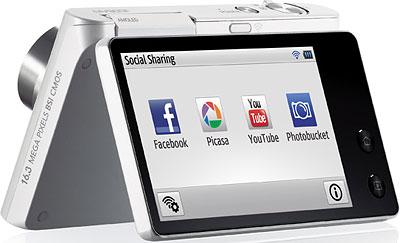
DE: Relative to WiFi, what have you learned from users and retailers about the popularity of the WiFi features? What’s the response been, back from the market? Are you hearing pro and con?
JK: The customers are responding incredibly well. We're getting customers coming in to retailers asking for cameras with WiFi. Right now, we have more WiFi models than anybody else, so we're getting a lot more product feedback than any other manufacturer tied to that. Customers expect their digital devices -- whether with cameras or TVs or anything else -- to be connected and have WiFi today. So it's like I said before, we see it as a table-stakes feature for cameras.
DE: Thats's really interesting. So it’s really driving sales then, if people are coming in specifically looking for that functionality.
JK: Yes! I mean… they have it on everything else. You have WiFi on your TV, your tablet, and in some cases even on your refrigerator. Every electronic device you’d buy today is connected. Your camera should be as well.
DE: How expensive or inexpensive is just the WiFi piece in the overall scheme of things? How much is added to the bill of materials? Will we see every camera -- even the $100 entry-level cameras -- having WiFi?
JK: Right now, WiFi still commands a premium in the market. Our opening price point WiFi cameras list at $179 right now. But in terms of cost or build materials, the technology and the components to add WiFi to a product are so pervasive right now that the actual hardware cost of adding WiFi into a device isn’t really that high. There is quite a bit in development in terms of integrating that from a user interface / user experience / product integration standpoint. We are now in the midst of our fifth generation of connected products. We've got a lot of experience with that. And as you enable them to work with our devices, it's very robust. It's really easy. It's pretty well-developed in terms of how we enable WiFi and interactions with WiFi with our cameras and tablets and phone connections.
DE: So it’s the software that’s more expensive than the hardware at this point. And you guys have, as you said, a long history now. You have a lot of software in the can for doing that.
JK: Yes. You can easily research what adding a WiFi radio from a component standpoint would cost, and it's not a lot to add to it.
DE: I've been reading that they're implementing WiFi now with software radio digitally, which is going to make it even cheaper. They'll cut a lot of the analog componentry. So definitely, WiFi is coming. It's interesting that it’s already hit the $179 price point so it's no longer just the $300-$400 camera that'll have it.
JK: Yes, I think you'll continue to see the price point for WiFi cameras come down as it expands into the market place.
DE: Do you see yourselves working toward phone / camera integration as the end goal? Will we ultimately see just all-in-one devices like the Galaxy Camera or do you see WiFi and direct WAN connectivity co-existing separately in the market over the long term?
JK: There's definitely convergence between cameras, phones, WiFi, 3G, 4G in devices these days. Over time, I think convergence will accelerate in most connected devices, whether it's a Galaxy Camera, a tablet or a smartphone. Many times, people don't know what network they're on. They're on 3G, 4G, WiFi. The devices will just use the best data path they can for the task they're performing. So from a user standpoint, I think all this stuff will continue to evolve, merge together and the lines will not just blur but disappear.
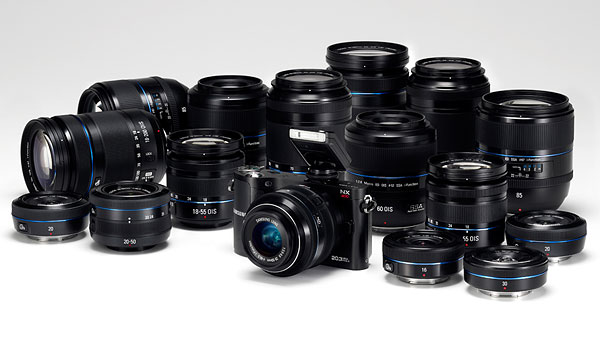
DE: Okay. I’m going to turn to the interchangeable lens market and the NX line next. We've seen Samsung make big strides in image quality in the NX series this year. We've been very impressed with the NX20 particularly. We're just putting the NX1000 through the lab now. You've also broadened the line with four models from $599 to $999 price points. Without getting into specifics on particular products, can you speak broadly as to what’s next for the NX line, or where it goes from here?
JK: For the NX line, we've made a really significant commitment. In terms of bodies, we now have three distinct models in the market. We have the highest resolution image sensor, and the mirrorless line is up at 20 megapixels. We've made a very significant commitment in terms of optics and lenses for the system and ecosystem. We've now got 11 lenses in the ecosystem. We've just added a 12-24mm and a 45mm f/1.8, so we're committed. We're going to continue to invest and grow the line. We will continue to march on in terms of rolling in new and best-in-class technology, whether it's what I call "traditional" camera features in terms of resolution or frame rate or new connected features. So... more interoperability with the smartphones, tablets, with the kind of cutting edge WiFi features we’ve rolled in this year.
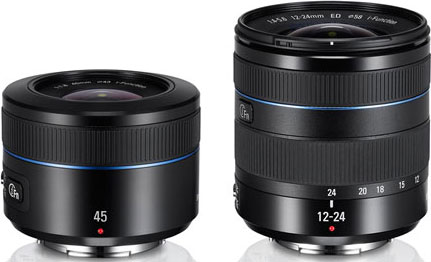
DE: Who do you see buying most of the NX cameras in the US? Who are the biggest customers by volume and what do some of the other groups look like?
JK: [chuckles] It's interesting. A lot of the initial understanding or assumption in the mirrorless market was that these would be step up products and that people would move up from a point and shoot to mirrorless. The reality is that the people, the dominant customer of the mirrorless camera -- particularly NX -- are customers who are moving over from a bigger, bulkier DSLR. And the realization that the NX or other mirrorless cameras have performance and features in line with -- or better than, in some cases -- DSLRs with less weight, smaller size, and connectivity is really awakening people and driving them to buy these cameras. So they're lighter, they're faster and they're connected. It's great. You can take an NX that's half the weight of a DSLR with a lens that's higher performance than the DSLR's, and carry it with you and not have a big divot your shoulder from carrying it around all day.
DE: Yes, that's been our feeling from the beginning. I always thought that mirrorless cameras were going to be, as you call them, sort of step-over devices, and that's proven to be the case in this country. I guess maybe in Japan and the Far East they've been the step-up products that the industry was expecting, but what you're finding is really exactly what I thought was the market from day one. It seems like there's been a groundswell with the mirrorless just in the last year, though. Are you seeing that too? It seems like they really are starting to gain a lot more traction in the U.S. market than they had.
JK: Sure. The U.S. market was slower than the rest of the world in adopting mirrorless. Right now, the mirrorless market is exploding in the U.S. Great for us, since that's where we've invested.
DE: The mirrorless market has really been filling out as we've been discussing here; there's a huge number of systems and offerings from a lot of different manufacturers now. How does Samsung differentiate itself uniquely in that? What do you feel is your place in the mirrorless market?
JK: It's really with technology. We're comparatively new in the removable lens market. We've made removable lens cameras in the past, but we don't have a legacy DSLR platform from decades and decades ago that we build them upon. So we focused our efforts and investments around technology. We were the first ones to bring built-in WiFi to the removable lens market, tied with very innovative apps for remote viewfinders, for linking to your smart device, for emailing from your camera. All those things that we've become known for in point-and-shoot. We've rolled that technology into mirrorless as well. We have a fairly significant advantage in that we're such a vertically integrated manufacturer. So with NX, we don’t have to rely on sensors from other manufacturers. We can move up to a 20-megapixel sensor because we make it. Our lenses are designed for APS-C from the beginning, so they're optimized for that sensor size. That could give us a wonderful and significant performance advantage both in optics and in lens performance for things like autofocus, because we're not pushing extra glass around from a legacy 35 mm platform.
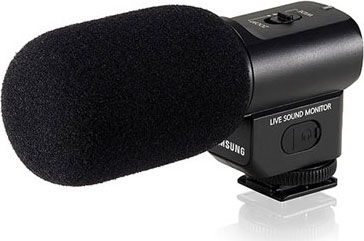
DE: Talking about the lenses, that's always a concern with a new camera system. You've been pretty aggressively introducing lenses. You mentioned you now have nine in the market. Trying to steer clear of specific product questions, how much will we see a continued emphasis on lenses? Do you feel like "Okay, we have a complete lineup now," or do you feel that you still have a lot to fill in that you're going to be working on?
JK: We're going to continue to invest in lenses. As you may be able to tell from the investments we've made already, we're really focusing on premium quality lenses. So you know, things like the 85mm f/1.4 and our 60mm macro. Those lenses are at the top of the performance range for those focal lengths in the market, whether DSLR or mirrorless. Those lenses are outperforming pretty much everybody else. So we will continue to invest in lenses for the NX line and build those out.
And part of the the cool underlying technology with NX is the way we've approached the accessory lineup. So instead of adding analog microphone ports and headphone ports and things like that to make the camera bigger, we're dealing with all that stuff digitally. So the boom microphone we just added, it does all the audio processing, the A/D conversion in the microphone, it sends it down a high-speed serial link into the camera. But we've also added an analog headphone jack to the microphone. So instead of adding all these extra ports to the camera that may or may not be used, some of the ones we use are actually on the mic. They put it on, they get straight A/D out of the mic, and still get the analog headphone jack. We haven't added the extra size and weight for those ports to the main body itself.
DE: That makes a lot of sense. We're starting to see the same thing. People are starting to connect things digitally to the cameras more so than with extra ports.
JK: Like the old school remote "pickle" triggers everybody seem to keep ports on for. We didn't see a need for that. We saw a need for the trigger. We didn't see a need for the port. So we have a remote pickle trigger, but that goes in the micro USB port. We combine all these things into the digital port we already have instead of taking out new real estate for old ports. And the EX2F is interoperable with most of the NX accessories, so that's cool. The boom microphone, the remote trigger, those things work with the NX. So if someone wants to go even smaller than an NX, and they want that EX2F, it fits into the family and works with the accessories.
DE: You have a great line of fast primes, the 16mm f/2.4, the 20mm f/2.8, 30mm f/2 and 60mm f/2.8. For a long while, these were pretty heavily back-ordered which I guess is a good indication of their popularity. How's the availability looking there? Are you catching up on the demand a bit?
JK: From a lens standpoint, we have a good supply. We're really managing our supply better. As well, we've expanded quite a bit into the photo specialty market so lenses are available at a lot more camera dealers, a lot more traditional outlets for those products as well. And you can also buy products directly on Samsung.com, too, so there's another way to get them.
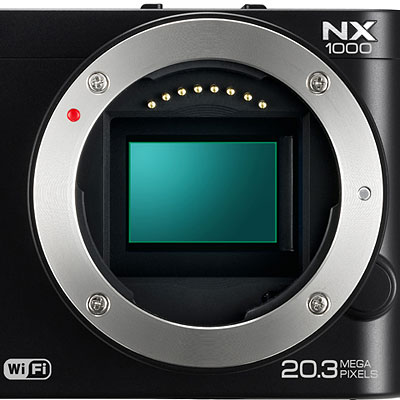
DE: My last question focuses on the fact that we're seeing third party lens offerings starting to show up for some of the other systems -- Micro Four Thirds and Sony's E-mount and the NEX series. What about third party offerings for the NX system? Are you working with any lens manufacturers, such as Sigma and Tamron? Are you open to that?
JK: Right now we haven't opened up the mount to any third parties. There's a lot of third party support out there in the form of lens adapters, even things like Lens Babies. But we haven't really opened up the electrical specifications and the electronic portion of the mount to anybody.
DE: Got it. I think that pretty much wraps it up for our questions. I really appreciate you taking the time, and we're really looking forward to getting our hands on the Galaxy Camera. Thanks, as always.
JK: You're welcome.